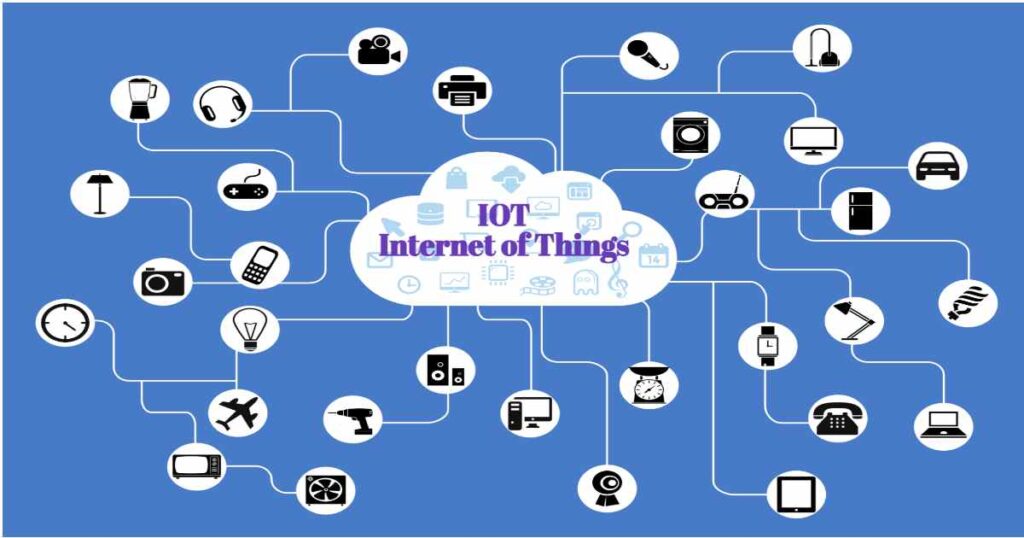
The Internet of Things is a term used for growing number of electronic gadgets that are connected to each other through internet to send and receive data or instructions.
It is a system of interrelated devices. A thing in the IOT can be an automobile with sensors, a heart monitor implant or some animal with biochip transponder. Many industries are using IOT to perform more efficiently. It plays an important role in understanding the customers, to deliver better results and make decision making easier.
History of Internet of Things (IOT)
Kevin Ashton from MIT (Massachusetts Institute of Technology), was co-founder of Auto ID center. He mentioned Internet of Things first time in his presentation made to Procter & Gamble in the year 1999.
He called this presentation “IOT” to incorporate a new trend of the year 1999 – The Internet. The IOT ecosystem came into its own by the year 2010 when government of china made IOT a priority in its 5 year plan.
How does IOT (Internet of Things) works?
An ecosystem of IOT contains internet enabled smart gadgets or devices such as sensors, communication hardware and processors to send and collect data. IOT devices can share the sensor data they can collect after connecting to an IOT gateway.
These devices act on the collected information from other devices as well. Most of the times, These devices do not need human intervention to perform the tasks. Still, people can interact with these devices to do the setup and to give instructions.
IOT devices make the use of AI (Artificial Intelligence) and machine learning to make the process of data collection easier and dynamic.
Importance of IOT


The IOT helps humans to work and live smarter. It also helps to gain more control over the life routines. In addition, IOT is an essential part of business. It helps the businesses to look into the way their system works. All this can be analyzed in real time to deliver insights of the performance.
As we discussed earlier, IOT does not need human interventions, so it reduces labor costs as well. It also reduces the waste and helps in improving service delivery.
Benefits of IOT to Organizations
The IOT (Internet of things) has several benefits to different industries. A few common benefits of IOT are following:
- It helps in improving customer experience
- IOT improves the employee productivity
- It saves money and time
- Helps is making better business decisions
- IOT monitors business processes
- It helps in generating more revenue
- Helps to access information on any device at any time and from anywhere
Example: IOT can be beneficial for farmers by making their work easier. Sensors can help in collecting data on humidity, soil content, temperature and rainfall.
Automation is utilized to manipulate and monitor mechanical and electronics systems in any building. If we see larger scenario, smart cities can be helpful for the citizens in reducing the energy consumption and waste.
Disadvantages of IOT
- Due to high number of connected devices, there can be a threat to confidential information from a potential hacker.
- If the system has a bug then it is possible that every connected device can get corrupted.
- It is difficult for devices to communicate with each other.
Device Management
All the devices should be configured, authenticated, and monitored in order to work together. This is the most important aspect of IOT. Without proper configuration and monitoring, the efficiency will drop.
IOT communication protocols & Standards
IOT gadgets can use a variety of communication protocols and standards when they talk to different devices. These protocols and standards are tailored to devices with restricted processing capabilities. Some devices use Bluetooth, WI-Fi and electricity for the connection and information transmission.
Impact of 5G on IOT (Internet of Things)
5G has arrived. It is ready to change the ways in which world is connected. There are few questions TechRepublic Premium asked in a survey from 159 candidates about the impact of 5G on IOT (Internet of Things) projects.
More than 56% of the respondents said that 5G is not enhancing IOT projects in their companies. This was the result despite of low latency, high bandwidth, and reliability. Because, A lot of companies have not worked on 5G IOT initiatives. There was a huge lack of deployment resources. Hence, The companies are still in planning stages.
Research- How 5G will transform the businesses
